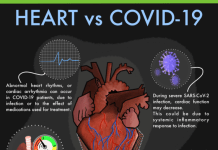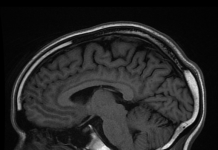James Webb Space Telescope’s deep field observations under JWST Advanced Deep Extragalactic Survey (JADES) unequivocally show that most of the galaxies rotate in direction opposite to the direction of rotation of Milky Way. This non-randomness in direction of galaxy rotation contravenes cosmological principles which requires number of galaxies rotating in one direction to be nearly the same as number of galaxies rotating in the opposite direction. The standard cosmological principle (CP) holds the view that the universe is homogenous and isotropic on large scale, i.e., universe is the same in all directions, there is no directional preference. The exact reason for the observed inconsistency is not known. Perhaps, the cosmological principle is incomplete in capturing large-scale structure of the universe and the universe began with a spin, or it has a repeating fractal pattern.
The cosmological principle (CP) is one of basic idea in cosmology. According to this, the universe is both homogenous and isotropic, on a sufficiently large scale, i.e., universe is the same in all directions, there is no directional preference. In the context of direction of rotation of galaxies, the standard cosmological principle implies that number of galaxies rotating in one direction should be nearly the same as number of galaxies rotating in the opposite direction. However, previous studies have indicated that that is not the case and suggested an asymmetry in direction of galaxy rotation. The recent analysis of extremely detailed images of galaxies in the early universe provided by JWST Advanced Deep Extragalactic Survey (JADES) unequivocally shows that most of galaxies in the deep fields rotate in the direction opposite to the direction of rotation of our home galaxy Milky Way.
| Milky Way – the galaxy we live in 1. Our home galaxy Milky Way is a spiral galaxy with a flat, disk-shaped structure. 2. All the stars (including sun) and the gas in the disk rotate around the galactic centre in counterclockwise direction (for the observer above the galactic plane). 3. The sun along with its entire planetary system including Earth is located in the Orion-Cygnus spiral arm about 25,000 lightyears from the galactic centre and takes about 230 million years to complete one rotation around the centre. 4. Earth, the location of our observations, also rotates around the galactic centre in the counterclockwise direction along with everything else in the Milky Way. |
| JWST Advanced Deep Extragalactic Survey (JADES) 1. Purpose: study of early universe 2. Studies galaxy formation and evolution from high redshift to cosmic noon (corresponding to redshifts of z = 2–3, when the universe was about 2 to 3 billion years old) 3. Uses infrared imaging and spectroscopy in the GOODS-S and GOODS-N deep fields (GOODS-N coincides with the Hubble Deep Field North, while GOODS-S coincides with the Chandra Deep Field South). 4. In the first year, the JADES researchers came across hundreds of candidate galaxies from the first 650 million years after the big bang. |
| Great Observatories Origins Deep Survey (GOODS) 1. Combines deep observations from three Great Observatories: the Hubble Space Telescope, the Spitzer Space Telescope, and the Chandra X-ray Observatory, along with data from other telescopes. 2. Enables astronomers to study the formation and evolution of galaxies in the distant, early universe. 3. aims to unite extremely deep observations from NASA’s Great Observatories (Spitzer, Hubble and Chandra), ESA’s Herschel and XMM-Newton, and the most powerful ground-based facilities. |
In the deep field images of the early universe captured by JWST under JADES programme, it has been found that the number of galaxies rotating in direction opposite to the direction of rotation of Milky Way is 50% higher than the number of galaxies rotating in the same direction as the Milky Way. Thus, there is a pronounced asymmetry in the distribution of galaxy spin directions in the early universe.
The exact reason responsible for the observed asymmetry that contravenes the Standard Cosmological Principle is unknown. The notion that “the universe is both homogenous and isotropic on a large scale” is not proven. JWST’s deep field observations seem to violate it. Perhaps, the principle is incomplete and does not properly capture the large-scale structure (LSS) of the early universe.
Alternative cosmological models violate the isotropy assumption of the Standard Cosmological Principle but explain the observed violation of symmetry in the direction of galaxy rotation. Black hole cosmology (BHC) and theory of rotating Universe is such an alternative model. According to this, universe is hosted inside a black hole in a parent universe. Because, a black hole spins, the universe hosted inside a black hole also spins in the same direction, hence such a universe has an axis or a preferred direction of rotation which may explain why most of the galaxies observed in JWST deep field have one direction of rotation. Fractal structure of universe is another alternative model which is based on assumption that the large-scale structure of the universe has a fractal structure. The repeating fractal pattern negates randomness in the universe hence the violation of symmetry in the directions of rotation of galaxies.
Another possibility is the cosmological principle is indeed valid, the universe is random, and the observed non-randomness in the direction of galaxy spin in JWST deep field to an Earth-based observer is an effect of rotational velocity of the observed galaxies relative to the rotational velocity of Milky Way on the brightness of galaxies. Galaxies rotating in direction opposite to the direction of rotation of Milky Way appear brighter due to the Doppler shift effect and are more likely to be observed. However, since impact of rotational velocity on brightness of galaxies is mild, it is difficult to explain the observations made through JADES and other programmes. Perhaps, some unknown aspect of physics of galaxy rotation affect the observations.
***
References:
- Shamir L., 2025. The distribution of galaxy rotation in JWST Advanced Deep Extragalactic Survey. Monthly Notices of the Royal Astronomical Society, Volume 538, Issue 1, March 2025, Pages 76–91. Published 17 February 2025. DOI: https://doi.org/10.1093/mnras/staf292
- Kansas State University News – K-State researcher’s study makes puzzling observation about Milky Way, deep space galaxies’ rotations. Posted 12 March 2025. Available at https://www.k-state.edu/media/articles/2025/03/lior-shamir-james-webb-space-telescope-spinning-galaxies.html
- Max-planck-gesellschaft. News – Rescue mission for the cosmological principle. Posted 17 September 2024. Available at https://www.mpg.de/23150751/meerkat-absorption-line-survey-and-the-cosmological-principle
- Aluri P.K., et al 2023. Is the Observable Universe Consistent with the Cosmological Principle? Classical and Quantum Gravity, Volume 40, Number 9. Published 4 April 2023. DOI: https://doi.org/10.1088/1361-6382/acbefc
- Peterson C., . Was the Universe Born Inside a Black Hole? Available at https://www.newhaven.edu/_resources/documents/academics/surf/past-projects/2015/charles-peterson-paper.pdf
***
Related articles:
- Early Universe: The Most Distant Galaxy “JADES-GS-z14-0″ Challenges Galaxy Formation Models (12 August 2024)
- James Webb (JWST) redefines appearance of Sombrero galaxy (Messier 104) (26 November 2024)
- Paradox of Metal-rich Stars in Early Universe (27 September 2024)
- The Milky Way: A More Detailed Look of the Warp (18 January 2021)
***




































